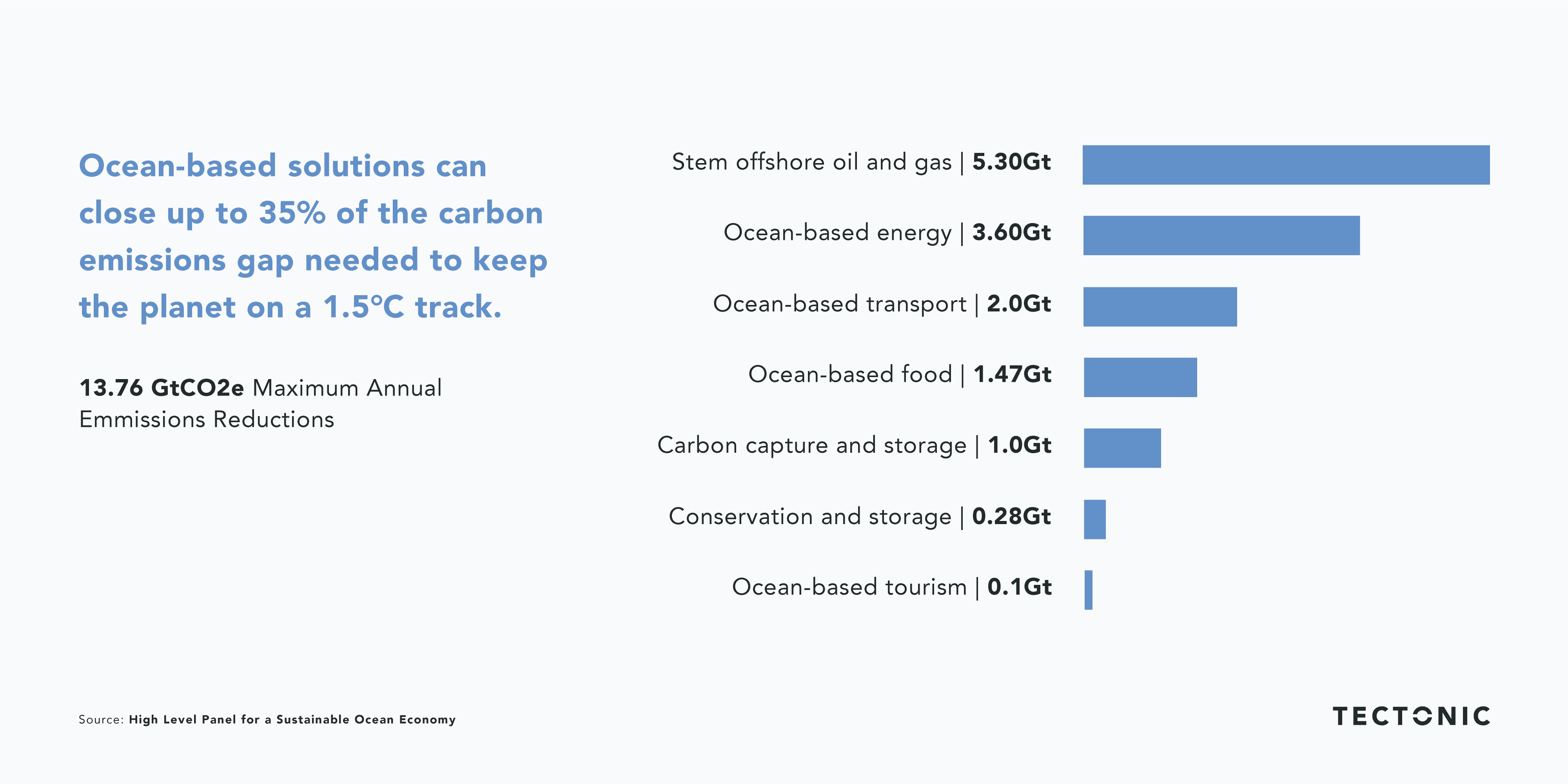This week, in honor of World Oceans Day today, we’re shifting the weekly brief slightly to highlight major ocean stories over the past few months. Dive in below to see how ocean-based solutions can solve the climate crisis, how scientists are growing more resilient kelp, and how shipping companies are exploring carbon storage in the seafloor.
Ocean-based solutions can close one-third of the emissions gap: A report from the High Level Panel for a Sustainable Ocean Economy outlines how ocean-based solutions can close up to 35% of the carbon emissions gap needed to keep the planet on a 1.5℃ track. Areas of opportunity include decarbonizing shipping, advancing ocean-based renewable energy, embracing sustainable ocean proteins, and protecting and restoring marine ecosystems.

Growing more resilient kelp: Scientists in Tasmania are growing various strains of giant kelp, some of which can grow to 175 feet tall, to identify which types can sustain hotter conditions. With rising ocean temperatures and invasive species destroying 95% of kelp in the country, companies, including Google, are funding pilots to save this giant kelp and make marine ecosystems more resilient and adaptable.
Testing geoengineering to cool the planet: With the planet off target for greenhouse gas emission reductions, a cohort of scientists are experimenting with geoengineering approaches, including cloud-brightening and changing the ocean's acidity. The marine project, led by Woods Hole Oceanographic Institution, plans to pour 6,000 gallons of liquid sodium hydroxide into the ocean 10 miles south of Martha's Vineyard. The theory is that the chemical base will reduce the acidity of surface water, making it more able to store carbon dioxide from the atmosphere safely. The project is funded by donors and the National Oceanic and Atmospheric Administration and requires the approval of the EPA.
Burying carbon in the ocean floor: Ship operators in Greece are working to bury liquefied captured CO2 in depleted offshore oil-and-gas wells for permanent storage. A deal has been signed for four ships to carry out this project, costing more than $300 million. The ships will also capture their own emissions or use ammonia to avoid emitting carbon. This project is part of a carbon-capture, utilization, and storage market that is expected to reach $5.2 billion by 2026, up from $2.6 billion in 2021.
Half of the world’s mangroves are at risk: A report from the International Union for Conservation of Nature (IUCN) found that sea level rise threatens half of the world's mangrove ecosystems. These ocean forests store 4-10x as much carbon as land-based trees, provide up to $65 billion in storm mitigation annually, and serve as bouy biodiversity as a nursery for juvenile marine life. The world currently loses 1-2% of mangroves each year, and as mangroves die off, they go from carbon sink to carbon source.
Cleaning up ocean plastic: The Ocean Cleanup received a $15 million grant from the Helmsley Charitable Trust to expand its efforts to collect plastics in the Great Pacific Garbage Patch, a 620,000–square–mile area nearly twice the size of Texas. The Ocean Cleanup is working to collect this plastic before it degrades into microplastics, ultimately entering marine and human life. The team estimates cleaning up the garbage patch could cost billions.
Changing ocean temperatures push the planet to a tipping point: In The Daily podcast from the New York Times, David Gelles and Raymond Zhong discussed different threats to the ocean, including reduced particulate matter in the atmosphere increasing sunlight exposure and subsequently driving up temperatures, and the risk of ocean current collapsing.


